Meet the Melanesian megapode – an avian species that starts life beneath the warm sands of the volcanic Solomon Islands.

The sound of our boat’s engine drowned out the vast silence of the South Pacific night. It was 4am and pitch black – the only thing I could see distinctly was the whiteness of the breakers crashing and spreading onto the shore. We were on the Solomon Islands, at a place called Savo, to see a bird that lays its eggs in the ground, like a crocodile. The embryos are warmed by the heat of volcanoes. When they hatch, the chicks, alone and unaided, have to scramble up – sometimes through 1.5m of sand – from the nest-grave in which their mothers have buried them. Parent and offspring will never knowingly meet.
The creature in question is called the Melanesian megapode – a ground-dwelling species, about the size of a chicken, with a small head, short brown wings and a spherical body that carries a deep, dark blue-black sheen. Its most notable feature is the size of its legs and feet, which explains that odd name – megapode means ‘big foot’.
Megapodes form a separate ancient family called the Megapodiidae that includes 22 species, which occur from the Indian Ocean across parts of Indonesia, the Philippines and New Guinea, as far as southern Australia, then way out into the central Pacific through the array of islands known as Melanesia. Savo is among that complex of archipelagos and it is no coincidence that this spot, like much of the zone in which megapodes occur, experiences some of the highest levels of seismic activity known on Earth.
Savo is a live volcano and the megapodes have probably exploited the island’s subterranean heat to incubate their eggs for millennia. In turn, the local people have learned to exploit this relationship to supply themselves with some of the most nutritious eggs produced by any avian species.
Denne historien er fra June 2019-utgaven av BBC Wildlife.
Start din 7-dagers gratis prøveperiode på Magzter GOLD for å få tilgang til tusenvis av utvalgte premiumhistorier og 9000+ magasiner og aviser.
Allerede abonnent ? Logg på
Denne historien er fra June 2019-utgaven av BBC Wildlife.
Start din 7-dagers gratis prøveperiode på Magzter GOLD for å få tilgang til tusenvis av utvalgte premiumhistorier og 9000+ magasiner og aviser.
Allerede abonnent? Logg på
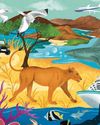
See It, Save It? - Wildlife tourism can be a powerful ally in protecting nature - but it can also harm it. We weigh up the pros and cons.
The sums of wildlife travel aren’t as simple as more tourists equals happier nature. How much did my visit really contribute to the conservation of Lady Liuwa and her habitat – and was that outweighed by carbon emissions from my flights? Did my presence disturb the animals’ natural behaviour more than it reduced the threat of poaching or benefited local communities?The question of whether wildlife travel is, on balance, good for wildlife is a complex one – and there’s no simple answer.

Can Your Really Offset Emissions? - Planning an overseas wildlife-watching trip entails facing some inconvenient truths
Imagine (or maybe you don't need to) that you hanker after the safari trip of a lifetime in sub-Saharan Africa. A 17-day tour beginning at the iconic Victoria Falls, passing through Zimbabwe, Zambia, Malawi and Tanzania, taking in some of the continent’s most wildlife-rich national parks, and ending on the lush island of Zanzibar.
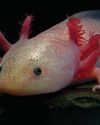
Metamorphosis: a life-changing event
WITH EVOLUTIONARY BIOLOGIST JV CHAMARY
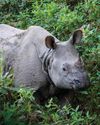
New series for BBC One: Asia
Settle in this autumn for a new natural-history extravaganza on BBC One and iPlayer: the longawaited Asia, presented by Sir David Attenborough.
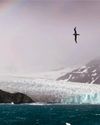
Loss of Antarctic sea ice could impact seabird food supply
Albatrosses and petrels may be forced to fly further to feed
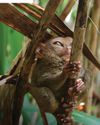
Tarsiers in trouble
Urgent action is needed to ensure survival of the Yoda-like primate

SNAP-CHAT
Chien Lee on shrew loos, rogue drones and being rained out of bed
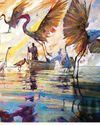
VISIONS OF NATURE
The winners of the Wildlife Artist of the Year competition 2024, from David Shepherd Wildlife Foundation
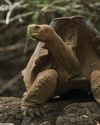
RETURN OF THE GIANTS
After two decades of preparations, the island of Floreana in the Galápagos is ready to welcome back an iconic tortoise
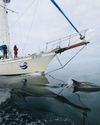
10 HOLIDAYS FOR CONSERVATION
Our round-up of the best ecotourism projects around the world. Here's how to help wildlife while having a blast!